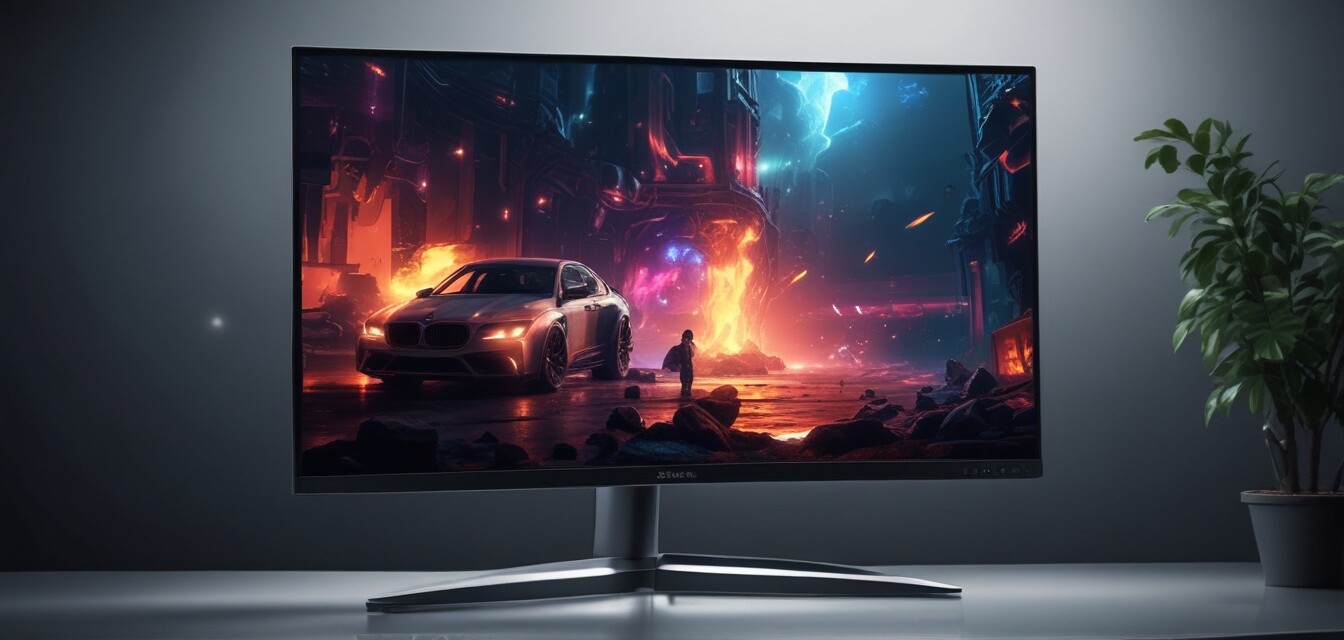
Setting Up Your OLED Gaming Monitor for Optimal Performance
Key Takeaways
- Proper physical setup maximizes viewing experience.
- Adjust software settings for optimal color and motion performance.
- Ensure your connectivity options are up to date for the best results.
- Consider calibration tools for fine-tuning visuals.
- Understand your monitor’s features to leverage its capabilities.
Setting up your OLED gaming monitor correctly is crucial to enjoying the full potential of its display capabilities. This guide provides comprehensive steps that cover everything from physical placement to software tweaks and connectivity options to ensure you're getting peak performance.
1. Physical Setup: Where to place your monitor
Correct placement of your OLED gaming monitor is essential for an immersive gaming experience. Follow these tips for the optimal position:
- Position the monitor at eye level to prevent neck straining.
- Maintain a distance of 1.5 to 2 times the diagonal screen size for comfort.
- Use a dedicated gaming desk to avoid clutter.
Monitor Height and Angle
| Height | Distance | Angle |
|---|---|---|
| Eye Level | 1.5 to 2 times screen size | 20 - 30 degrees |
2. Connectivity Options: Choosing the right cables
Using the right connectivity options is vital for optimal performance. Here are popular connections:
- HDMI: Ideal for 4K gaming and supporting the highest refresh rates.
- DisplayPort: Preferred for its higher bandwidth capabilities.
- USB-C: Great for modern devices, offering versatility and power delivery.
Comparison: HDMI vs DisplayPort
| Feature | HDMI | DisplayPort |
|---|---|---|
| Max Resolution | Up to 8K | Up to 8K |
| Audio Support | Yes | Yes |
| HDR Support | Yes | Yes |
3. Software Settings: Adjusting your display settings
Once your monitor is physically set up and connected, it's time to configure your software settings. Here’s how:
- Access the monitor settings through the on-screen menu.
- Adjust Brightness and Contrast for optimal visuals.
- Set the refresh rate to match your gaming activities.
- Enable Game Mode if available to enhance responsiveness.
Recommended Display Settings
| Setting | Recommended Value |
|---|---|
| Brightness | 50-75% |
| Contrast | 70-80% |
| Refresh Rate | 144Hz (if supported) |
4. Calibrating Your Display: Ensuring true colors
Calibration is key to ensuring your OLED monitor displays colors accurately. Consider these steps:
- Use calibration tools or software to fine-tune settings.
- Adjust gamma settings for better depth perception.
- Regularly check for firmware updates to maintain visual performance.
Conclusion
Setting up your OLED gaming monitor for optimal performance involves much more than simply plugging it into a power source. By paying attention to placement, connectivity, and software settings, you can unlock the full potential of your monitor. Regular calibrations and updates will ensure your gaming visuals continue to deliver the best experience possible.
Tips for beginners
- Always read the user manual for specific instructions.
- Experiment with different settings to find what works best for you.
- Ensure your gaming hardware is compatible with the monitor's features.
- Join gaming forums for additional insights and settings shared by other users.
Pros
- Exceptional color accuracy and contrast.
- Immersive viewing experience with deep blacks.
- Support for high refresh rates enhancing gaming performance.
Cons
- Potential for burn-in if static images are displayed for long periods.
- Higher initial investment compared to traditional displays.
Further Reading
For more information on choosing the right monitor, check out our other guides:
- Buying Guides - In-depth advice for all types of monitors.
- 4K OLED Gaming Monitors - Explore the benefits of 4K technology.
- G-Sync & FreeSync OLED Monitors - Understand adaptive sync technologies.
- Product Comparisons - Compare different models side by side.
- Portable OLED Gaming Monitors - Considerations for gaming on the go.